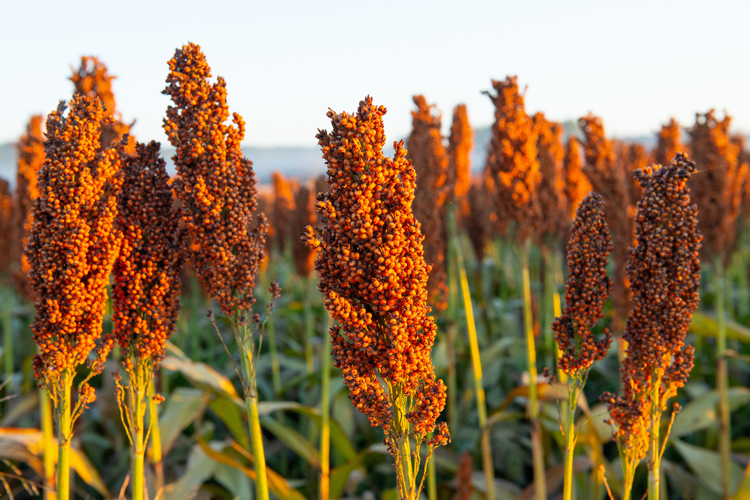
While nutrient content and digestibility drive energy value to a large extent, particle size and the physical characteristics of your silage are increasingly important to account for in order to unlock forage feeding potential. Focusing upon those physical characteristics, let’s delve into a new benchmark measure: berry processing score (BPS).
Thanks to work done by Dave Mertens at the U.S. Dairy Forage Research Center and Virginia Tech’s Gonzalo Ferriera to develop corn silage kernel processing score (KPS), the commercial silage measure for grain processing has been vaulted to the forefront in harvesting, agronomy, and dairy nutrition circles. Kernel processing score quickly became a focal point in silage benchmarking evaluations, and decades after the initial research, corn silage KPS continues to be one of the hottest topics in dairy and beef nutrition.
Pivoting from corn silage to another starch-rich silage, sorghum has grown in importance on Southern and Western farms. Extended drought, pivot and well irrigation drying up, expensive water rights, and farmers cropping more dryland acres are some of the factors driving the interest in sorghum, as this crop is far more water-efficient than corn. When harvested after heading, sorghum silage can yield 15% to 20% starch content. In theory, the energy potential in this starch and the sorghum berries is valuable for dairy and beef rations. However, nutritionists often discount the starch value of sorghum to zero in ration balancing efforts due to poor berry processing, which results in starch passing through cattle undigested.
A decade in the making
Fast forward to the present where commercial berry processing capabilities have been unveiled for self-propelled forage harvesters. These implements are having a big impact. Early indications are that the berry and starch energy potential in silage is finally being unleashed with processing. Speculating about this potential evolution back in the mid-2010s, Kansas State University’s Jared Johnson and Mike Brouk and I had worked together on a conceptual BPS evaluation.
At the time, Johnson’s doctoral research program simulated berry processing in the Kansas State University engineering lab as there were no harvesters outfitted with berry processors capable of breaking the sorghum berries. The laboratory method is similar to KPS in that a sorghum silage sample is dried and sieved in a Ro-Tap shaker for 10 minutes. Then, the relative amount of starch that passes through the 2.36-millimeter sieve is quantified. Luiz Ferraretto with the University of Wisconsin-Madison and colleagues helped refine and advance the laboratory method. But with the laboratory measure developed and tested well ahead of the self-propelled processing engineering developments needed, we sat and waited.
Recently, new berry processing implements have found their way into choppers. Juan Pineiro and his graduate research students at Texas A&M University, alongside Katie Raver at Rock River Laboratory Inc., have picked up the baton in research and field evaluation efforts as these machines have hit the fields in the past year. Pineiro’s research is finding that BPS is related to rumen starch digestibility. Therefore, gains in BPS can be equated to better starch utilization by dairy and beef cattle. As I’m coming back to the topic a decade later, I’m aiming to team up with these groups to bring this concept to the table in dairy and beef nutrition, harvesting, and management conversations.
Berry benchmarks
Several hundred samples have already been run through commercial BPS analysis, and the early results are compelling. The figure details the distribution in commercial sorghum silage BPS. Zooming in on the 2024 crop year, we’re finding a normal and sizable distribution of results. A 50% BPS threshold is the goal, which seems to correspond to about the top 30% of commercial sorghum silages analyzed by Rock River Laboratory Inc.
With this new BPS metric in hand, it’s time for us to benchmark our sorghum silages. I warmly remember Mike Hutjens from the University of Illinois routinely writing about and discussing fecal starch or KPS, challenging readers and audiences with the question, “Do you know your number?” Now, it’s time to follow suit, but this time, bringing BPS into the mainstream. This new BPS benchmark stands to dramatically enhance our understanding of sorghum silage feeding value and help us achieve better dairy and beef cattle performance.
This article appeared in the April/May 2025 issue of Hay & Forage Grower on page 20.
Not a subscriber?Click to get the print magazine.

